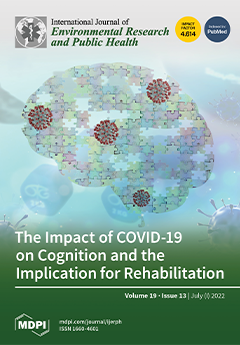Since the long-term mental health impact of COVID-19 is not yet fully understood, the present study explored changes in mental health outcomes and pandemic-related coping behaviors across four pandemic stages. The main objective was to gain insights into the dynamics of mental health
[...] Read more.
Since the long-term mental health impact of COVID-19 is not yet fully understood, the present study explored changes in mental health outcomes and pandemic-related coping behaviors across four pandemic stages. The main objective was to gain insights into the dynamics of mental health and coping, considering different pandemic features at different assessment waves. The final sample consisted of
N = 243 adults from the Austrian general population. Data were collected at four timepoints (between June 2020 and December 2021) via
LimeSurvey, an open-source online survey tool. Symptoms of posttraumatic stress disorder (PTSD), adjustment disorder (AD), anxiety, and depression were assessed using validated instruments: Primary Care PTSD Screen for DSM-5 (PC-PTSD-5), AD-New Module 8 (ADNM-8), and Patient Health Questionnaire (PHQ4). We also administered the Pandemic Coping Scale (PCS) to address pandemic-related coping behaviors. Cochran’s Q test and repeated measures ANOVAs were applied to assess changes over time. The results indicated that prevalence rates of AD (χ
2(2) = 16.88,
p = 0.001), depression (χ
2(3) = 18.69,
p < 0.001), and anxiety (χ
2(3) = 19.10,
p < 0.001) significantly changed across four assessment waves. Changes in mean scores of the assessed mental health outcomes were also observed. For pandemic-related coping, we found differences in the subscales: healthy lifestyle:
F(3, 651) = 5.11, prevention adherence:
F(2.73, 592.35) = 21.88, and joyful activities:
F(3, 651) = 5.03. Taken together, our study showed a higher mental health burden in wintertime than in summertime, indicating an increased need for psychosocial support in times of stricter measures, higher incidences, and higher death rates. Furthermore, the observed decrease in adaptive coping behaviors suggests that easy-to-implement coping strategies should be actively promoted in order to maintain mental health during and in the aftermath of pandemics.
Full article





